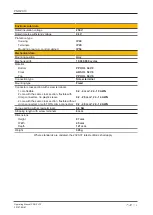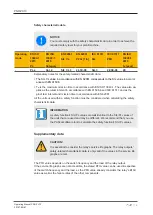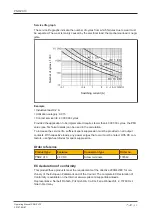
PNOZ X13
Operating Manual PNOZ X13
20187-EN-07
| 10
R
lmax
R
l
/ km
I
max
=
R
lmax
= max. overall cable resistance (see
)
R
l
/ km = cable resistance/km
}
Use copper wiring with a temperature stability of 60/75 °C.
}
To prevent EMC interferences (particularly common-mode interferences) the measures
described in EN 60204-1 must be executed. This includes the separate routing of cables
of the control circuits (input, start and feedback loop) from other cables for energy trans-
mission or the shielding of cables, for example.
}
Do not switch low currents using contacts that have been used previously with high cur-
rents.
}
Adequate protection must be provided on all output contacts with capacitive and inductive
loads.
}
The power supply must comply with the regulations for extra low voltages with protective
electrical separation (SELV, PELV) in accordance with VDE 0100, Part 410.
Important for detection of shorts across contacts:
As this function for detecting shorts across contacts is not failsafe, it is tested by Pilz during
the final control check. If there is a danger of exceeding the cable length, we recommend
the following test once the unit is installed:
1. Unit ready for operation (output contacts closed)
2. Short circuit the test terminals S22, S32 for detecting shorts across the inputs.
3. The unit‘s fuse must be triggered and the output contacts must open. Cable lengths in
the scale of the maximum length can delay the fuse triggering for up to 2 minutes.
4. Reset the fuse: Remove the short circuit and switch off the supply voltage for approx. 1
minute.



































